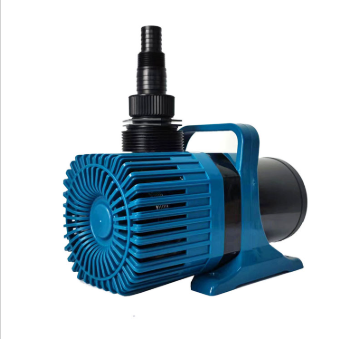The working principles of garden water pump
2025-05-28
A garden water pump is a device used to move water from one place to another—typically to irrigate plants, fill ponds, or move water from a storage tank or well. The working principle depends on the type of pump, but most garden pumps operate on the same fundamental physics: creating a pressure difference to move water.
Here’s a breakdown of the working principles of common garden water pumps:
1. Centrifugal Pumps (Most Common Type for Gardens)
Working Principle:
A centrifugal pump uses an impeller (a rotating disk with blades) to create centrifugal force.
As the impeller spins (driven by an electric or petrol motor), it pushes water outward from the center to the edges of the pump casing.
This outward motion creates a low-pressure zone at the inlet, drawing more water in.
The water is then directed out through a discharge pipe at higher pressure.
Ideal For:
Moving water from rain barrels, shallow wells, ponds, or tanks
Lawn irrigation
General garden watering
2. Submersible Pumps
Working Principle:
These pumps are placed underwater (e.g., in a well or pond).
They use a sealed motor to drive an impeller or turbine directly in the water.
The impeller forces water up through a hose or pipe to the surface.
Because they’re already submerged, they don’t need to draw water in—they push it upward.
Ideal For:
Deep wells
Draining water features or flooded areas
Garden fountains
3. Diaphragm Pumps (Less Common for Home Use)
Working Principle:
These pumps use a flexing diaphragm to create suction.
As the diaphragm moves back, it creates a vacuum that draws water in.
As it pushes forward, it forces water out through a discharge valve.
It works like a piston, but with flexible parts.
Ideal For:
Transferring chemicals or dirty water
Applications needing low flow but high suction

Basic Components (for Centrifugal and Submersible Pumps):
Motor: Powers the impeller.
Impeller: Spins to create water movement.
Pump casing: Directs flow and houses the impeller.
Inlet and outlet hoses: Where water enters and exits.
Priming chamber (for non-submersible): May be needed to fill the pump with water before starting.
Key Notes:
Priming: Many surface pumps need to be "primed" before operation (i.e., filled with water) to avoid airlocks.
Pressure vs. Flow: Garden pumps are often rated by how much water they can move (flow rate) and how high they can lift it (head height).
Power Source: Can be electric (common), battery-powered, solar, or petrol-driven.
If you are interested in our products or have any questions, please feel free to contact us and we will reply you within 24 hours.